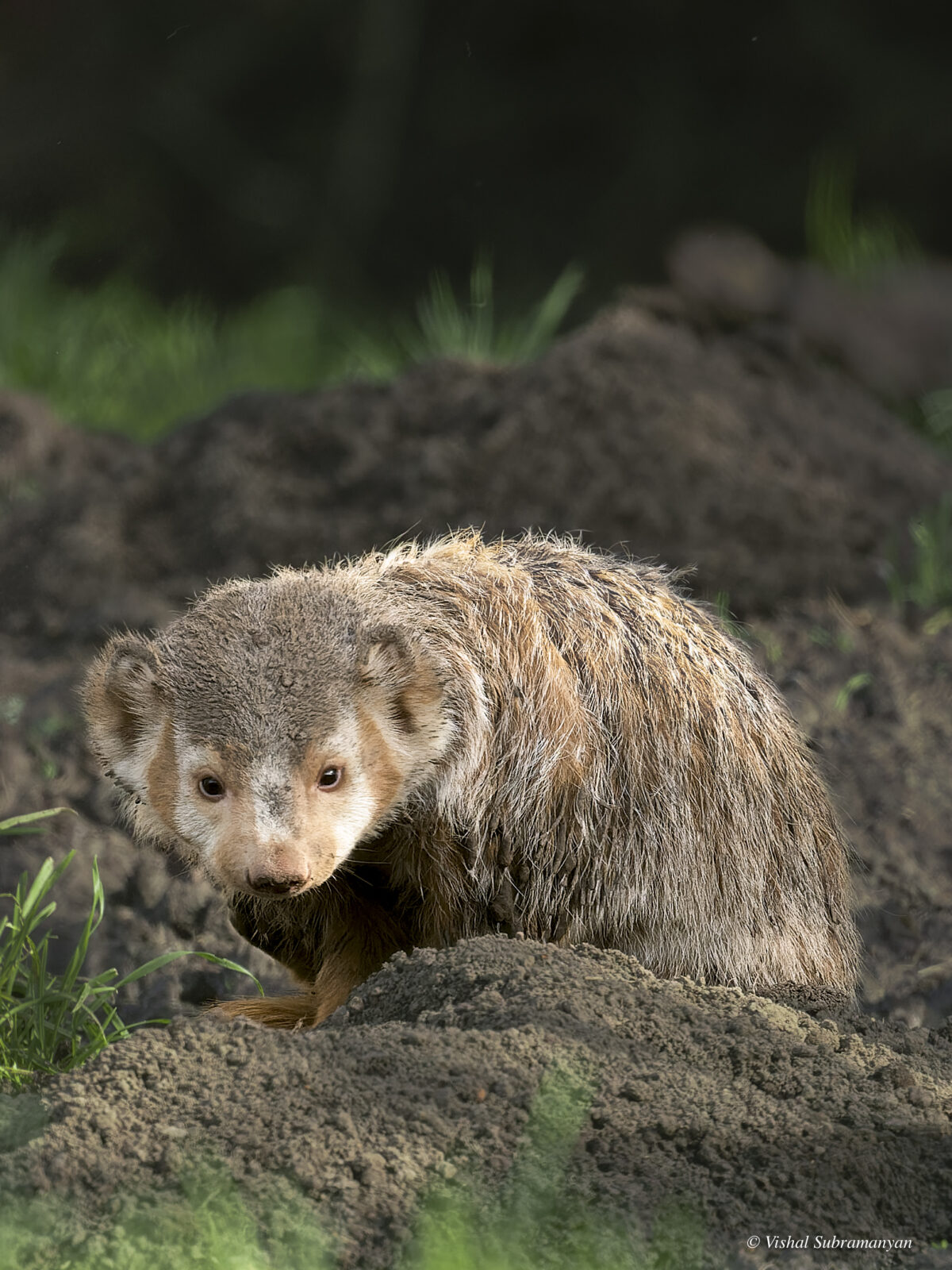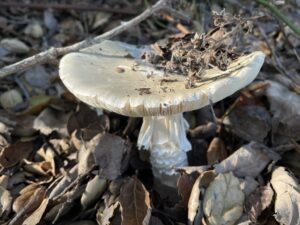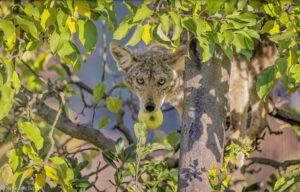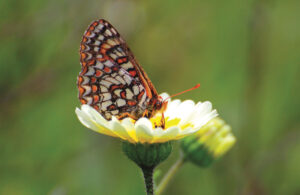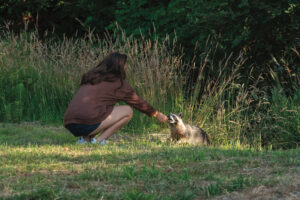
In late November, I was sitting in my class at UC Berkeley when my phone suddenly blew up with text messages. A rare animal had just made headlines across California—a leucistic American badger. A hiker had snapped iPhone pictures of this ghostly creature in Point Reyes, and everyone in the wildlife community was talking about it.
I’ve been fascinated with animal coloration for years, ever since I photographed a rare leucistic bald eagle in Point Reyes National Seashore at age 14. Leucism is a partial absence of melanin pigmentation in wildlife that can cause pale coloration; it’s been documented in species such as crows, salamanders, and raccoons. Hearing about another leucistic animal in the same park piqued my interest immediately. But I didn’t want to jump in with other photographers that might already be looking for it. Wildlife photography has gotten quite popular since the start of the pandemic, and many animals have been crowded by photographers (as Sarah Killingsworth wrote about in Bay Nature’s Fall 2023 Issue). Point Reyes has been especially problematic in this regard. I didn’t want to be part of any crowd that might disturb badgers, which are a species of special concern in California. Plus, I had my finals coming up in a couple of weeks!
But I also knew I’d soon have a good chance of running into this badger, because I was about to spend a lot of time in Point Reyes myself. I’m a wildlife photographer who has spent the last several years photographing bobcats, mountain lions, and various other Bay Area species, as I’ve written about for Bay Nature. And at UC Berkeley, I work for various labs doing camera trap photography and research on Bay area wildlife. During the winter break, I had a lot of field work to do for a camera trap project in Point Reyes on the elusive Point Reyes mountain beaver.
So as I began my work in the park in December, in between managing my grid of camera traps, I kept an eye out for badger activity, such as fresh burrows or “throw mounds,” the piles of dirt they kick up.
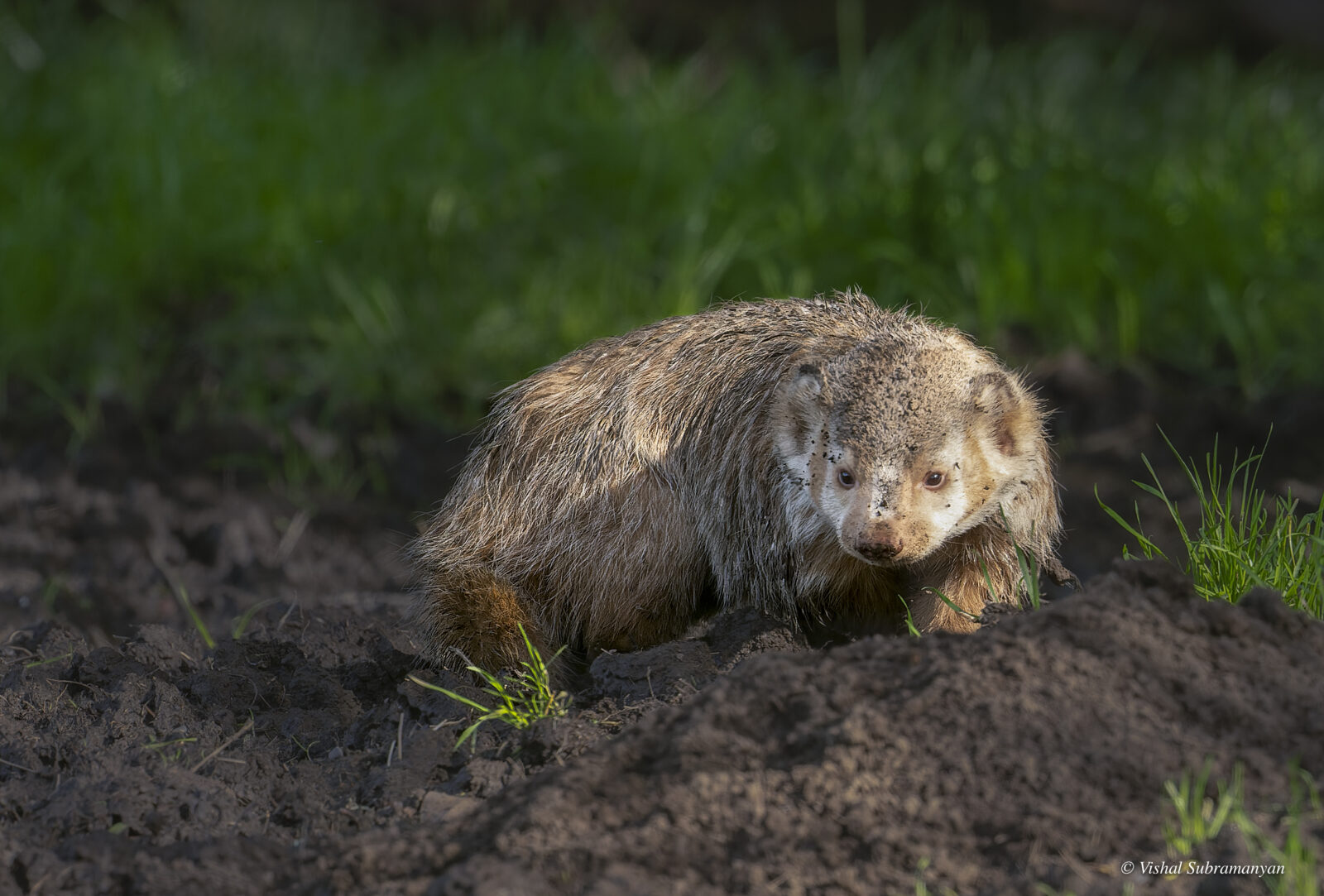
After a few days, I stumbled upon some fresh burrowing activity. But I didn’t see any badgers around. Then, on Christmas Eve, while out scanning the same field, I spotted a bobcat in the distance, hunting. As I watched and photographed the bobcat through my long lens, it walked right by a mound sticking out of the ground. I had seen this mound earlier but simply dismissed it as a rock.
When I took a closer look through my lens, I saw the mound had fur and a pinkish nose. And this fur wasn’t the normal badger black—it was unusually light. I snapped a picture and zoomed in on it on my camera’s LCD screen. This was the rare badger that I had been looking for!
And I realized, almost as suddenly, that I was upwind of it. I stopped shooting and hurried to a downwind spot, to keep it from picking up my scent. As I did so, some hikers walked up the trail and stood right where I had been when I first saw the badger. They were directly upwind of the badger—which must have smelled them, because it dove into the burrow. I waited for a bit, but it was clear that I had missed my shot.
The very next day I went back to the field to find it digging outside of his burrow—likely for gophers, badgers’ preferred prey in this area. I kept a safe distance of 30 yards away and managed to get a few photographs. The lighting conditions were difficult, with a bright sun directly behind the badger, and I couldn’t risk moving and letting it pick up on my scent. The badger soon finished foraging and went back into its burrow.

Examining my few photographs later, I noticed the badger didn’t quite look like the other leucistic animals I’d seen. I’ve seen leucistic birds, like the eagle, that looked almost completely white. But this badger seemed more reddish. I delved into this more, and reached out to badger expert and ecologist Jessie Quinn, who told me the badger looked more like it had a different color variation: erythrism.
“It looks like most of the markings that are typically dark on a badger are red, which is the definition of erythrism,” says Quinn, who researched American badgers at UC Davis. The underlying causes and implications of this condition aren’t clear, she says. But scientists suspect erythrism is caused by a recessive genetic mutation that results in an overproduction of reddish pigments. “While erythrism has been documented in a few cases in badgers, it is generally a rarer condition than leucism and albinism,” Quinn says.
According to Ted Stankowich, professor of evolutionary ecology at California State University, Long Beach, the erythrism could potentially impact the badger’s predator defense capabilities. “Badgers usually have dark facial stripes that may signal ferocity to potential attackers,” Stankowich says. “So having erythristic coloration would weaken that signal and potentially lead to more attacks or potential for injury from predators or competitors.”

Armed with all this new information, I was hungry to get a National Geographic-worthy photo of this individual. As I did my camera trap work in the area, I’d scan for the badger every time I went near the field. But days went by, and I did not see the badger again until the last week of my break.
That day, the sun was beating down in fields that had been drenched by rain the night before. Not long into my search, I spotted the badger just as I had seen it the first time—curled up in a ball, sleeping outside its burrow. I was thrilled to find it again, and immediately moved to a safe distance downwind. Then, the wait began. Patience is key for any wildlife photographer. I’m used to waiting hours to get the photos I’m hoping for.
Over the course of a few hours, the badger got up a few times to groom itself and roll around in the dirt a bit near its burrow. But I was too far away to get good shots. Finally, after about four hours, the badger finally left its burrow to start foraging. It started digging in new sites, perhaps to look for prey or make new burrows. American badgers rotate between their burrow sites often, sometimes as frequently as every day. This can be to avoid predators, among other reasons. After digging around for a while, the badger made its way farther and farther away from its burrow, and eventually I had a better chance to grab some photos. I’ve seen badgers twice before, and both times they stayed within a couple feet of their burrows. So this was new, and interesting.
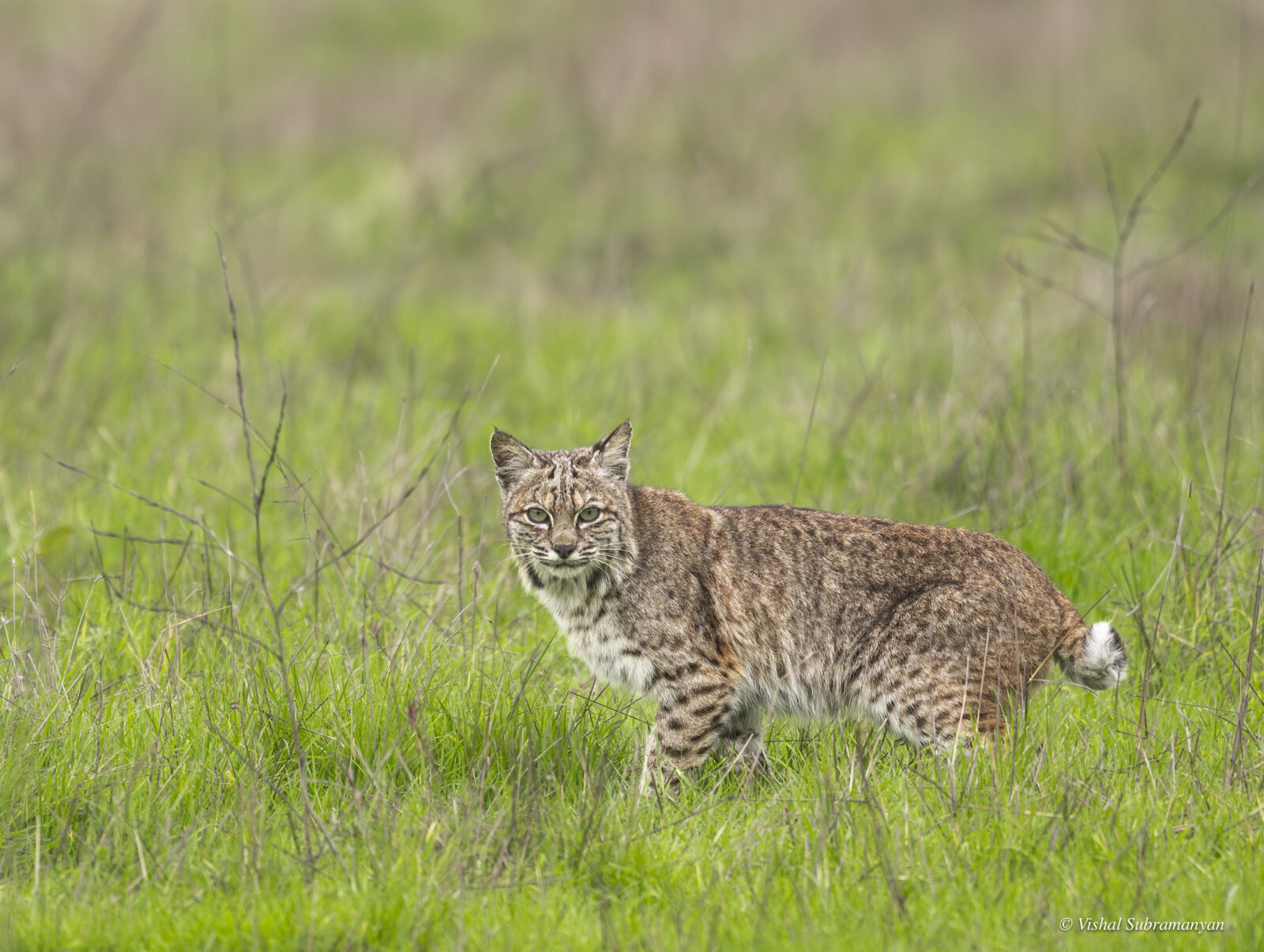
Then I noticed another predator in the distance—a female bobcat. Probably the same one I had seen weeks earlier when this saga began. The badger was heading straight in her direction! When it got within 20 feet of the cat, it sped up its stride, running full-bore towards the bobcat. The cat bailed, jumping over a fence and out of sight. It was a truly remarkable interaction to witness, even if it was too spread out to capture the drama in the same frame.
Job done, the badger disappeared into one of its many burrows. It left me with many photos and an amazing experience. I haven’t seen it again—or shared the location with anyone. I’m grateful to have had this encounter with the ginger-colored badger. I hope that it has a wonderful long life as a badger in those fields at Point Reyes National Seashore.
